Managing for Upland Game Birds on Your Regenerative Ranch
Providing a welcoming habitat for quail and other upland game birds can benefit soil health and your bottom line.
The first sharp, upward trill of a bobwhite quail in southern Oklahoma marks the sure sign of a new season. It’s a signal that marks time and fond memories for Noble Research Institute Ag Consultant Will Moseley.
“That classic bobwhite call is such a special part of springtime in the country,” Moseley says. “Most people enjoy seeing and hearing these birds, and hunting them is an important part of our social and cultural history and heritage in America.”
Bobwhite and other quail, along with varieties of wild turkey, pheasants, dove, grouse and more, are considered upland game birds, depending on classifications by state fish and game commissions. Often, their prime habitat is found on private ranchland.
“If you see those species on the landscape, you know you’re probably doing a good job of managing for healthy ecosystems and healthy soil,” Moseley says.
The game birds may also add an economic value to your ranch. In southern Oklahoma and Texas, “It’s not unheard of to get $10-$20 per acre per year for a recreational lease,” he says. Lease rates vary depending on the location and targeted species, but still, “that’s a lot of money sitting on the landscape.”
Here are Moseley’s tips to capture these social, ecological and financial benefits of managing for upland game birds on your regenerative ranch.
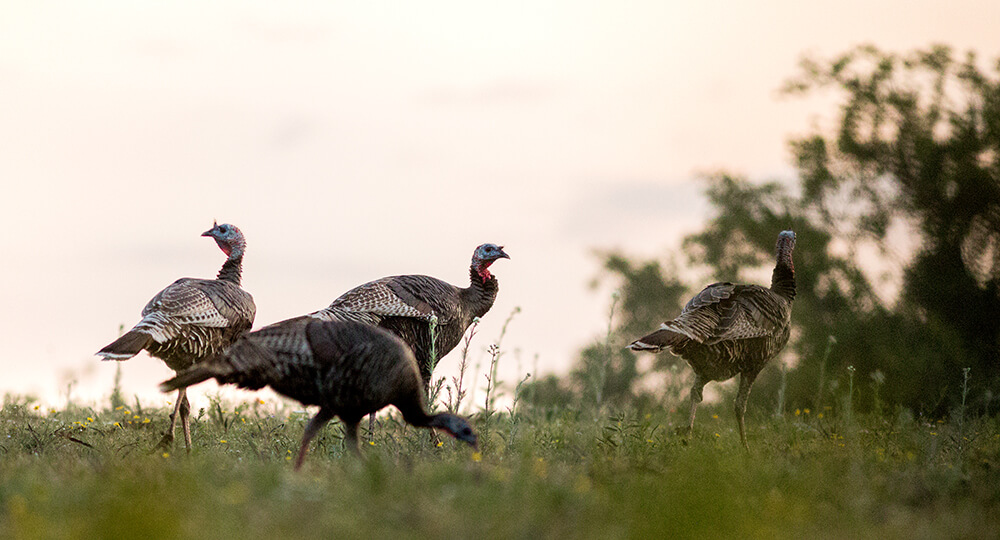
KNOW YOUR CONTEXT, AND THEIRS
Start by taking stock of the game birds you’ve noticed on your property. What time of year do you see them, and where do they tend to congregate? Next, think about the scale and connectivity of habitat the species need in order to thrive.
If your ranch is an island of healthy habitat in a sea of monoculture cropland, take caution. Birds like wild turkeys may range over more than 1,000 acres in a day, Moseley says, so the land health and habitat availability around you may impact your ability to consistently attract and maintain a sustained bird population.
The inverse is true, too. If your grazing pastures are a manicured field of bermudagrass, you may occasionally spot bobwhite quail passing through, but they’re probably on their way to habitat that better suits their needs.
Once you have an idea about which species your ranch and management may be most suitable for, take some time to better understand those species’ requirements. What do they eat? What kind of shelter do they prefer? Where and when do they nest? What kind of water sources do they need? How much space do they require to thrive?
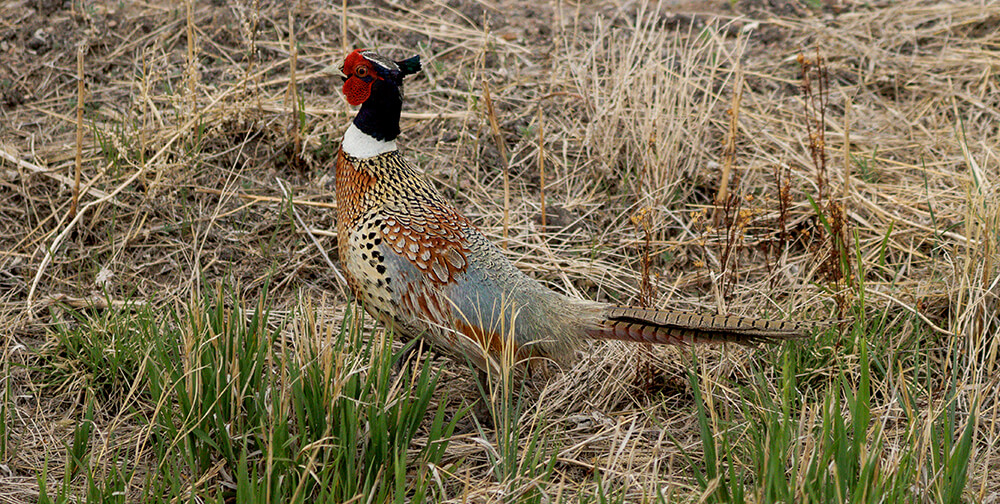
MANAGE FOR DIVERSITY + COVER
It may sound simplistic, but when managing for upland game birds, remember that wildlife loves a wild landscape.
“In our human psyche, we want things neat. We like the look of land that’s very manicured, tidy,” Moseley says. “But wildlife species want a messy landscape.”
First and foremost, that means adding diversity.
“They want diversity in plant species, diversity in plant structure, diversity in applications of management, diversity in timing of use. It’s about diversity, diversity, diversity,” he says.
In his region, a “messy” landscape beneficial to upland game would be a native plant community filled with bunch grasses like little bluestem, Indiangrass, big bluestem, and more; plus forbs like sunflowers, clovers and ragweed. Wild turkeys roost in trees in night, so some tree component for them and shrubs for quail help provide cover.
As a land manager, reducing or eliminating herbicides and mowing may be the top strategies to help enhance wildlife habitat.
“That’s a really hard step for a lot of guys, and I understand that,” Moseley says. “But it does have a massive impact on wildlife species.”
Consider the tradeoff of reducing input costs with less herbicide application while adding the value of a recreational lease in a wilder habitat. More diversity may reduce some grazing productivity, but the tradeoffs could still result in greater profitability in the end.
Keep an eye on the ground cover upland birds need for healthy habitat to help guide grazing management toward more regenerative rest and recovery time, too. Many ground-nesting birds nest in the previous year’s growth each spring, which gives land managers more incentive to leave adequate cover in their fall and winter grazing plans. A more conservative grazing plan should also yield a healthier grass stand in subsequent seasons, Moseley points out.
“These are the principles for soil health, too, so we’re making win-win decisions here.”
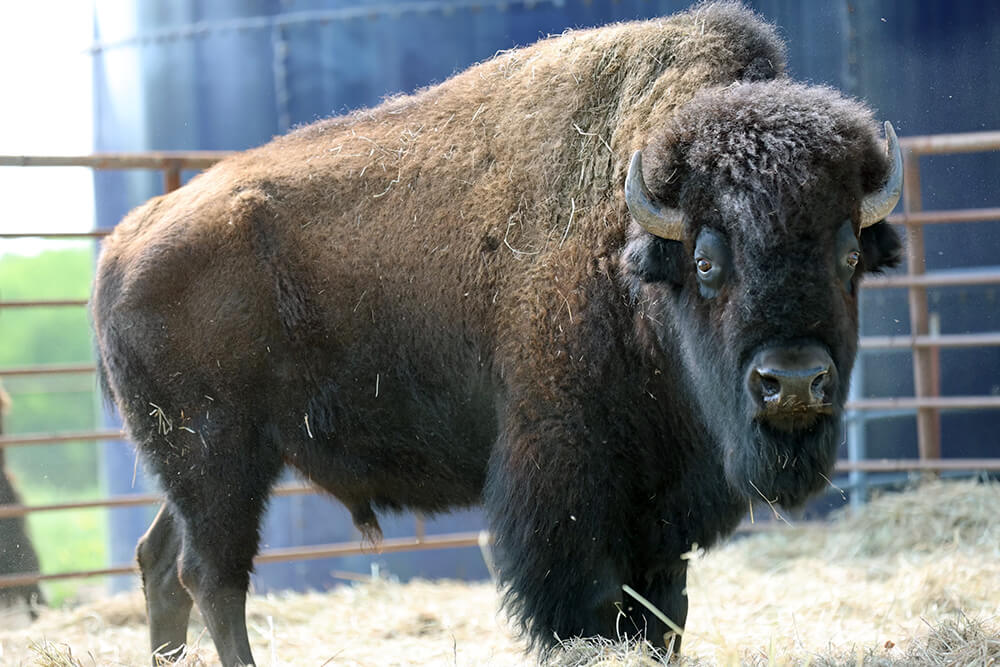
START SMALL, ENHANCE WHAT YOU HAVE
Managing land for more upland game birds and adding a resulting recreational enterprise to the ranch is a time and energy commitment.
“You have to be realistic in what you can achieve,” Moseley advises. “Start small, experiment, make a long-term commitment to enhancing the habitat and growing the enterprise. It’s not going to happen overnight.”
Make management changes gradually to enhance habitat and create opportunities for leasing, such as designing a grazing plan that moves livestock away from the prime habitat during hunting season. Plan to commit the time you’ll need to work with potential lessees and hunters.
“It’s all about planning and communication between the landowner or manager and the lessee,” Moseley says.
There’s no such thing as a ‘typical’ hunting or recreational lease, he says, as each situation and personality offers different opportunities. The enterprise may start as a simple lease contract where one individual or a group pays for access throughout the upland game bird season for a flat, per-acre rate. Other landowners or managers may want to grow the enterprise into scheduled, guided hunts that provide lodging and meals, too. Regardless, the level of your involvement has to fit your management and financial goals.
No matter what the agreement looks like, seek out lessees who value and care for your land as much as you do, and who value the time and effort you’ve committed to caring for it.
“It’s something really special, knowing there are ranches out there with these really healthy ecosystems providing habitat for wildlife and these services to our country that so few people even know about,” Moseley says. As a hunter, recreationist and ecologist, he says, “I’m often in awe and left really grateful for how much I can see a landowner cares about their land and how much it means to them to care for these game species, too.”
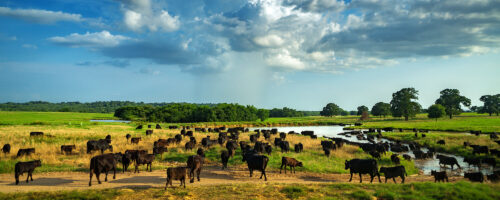
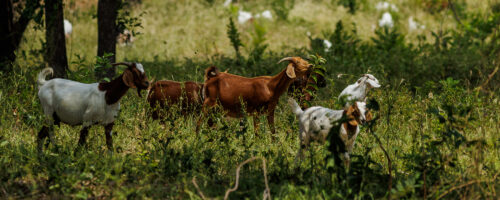
Comment
Leave a Reply
1 comment on: "Managing for Upland Game Birds on Your Regenerative Ranch""

Tony Malmberg
August 1, 2023Diversity and complexity go a long way toward resiliency. That is the case with flora, fauna, finances, and social relationships.